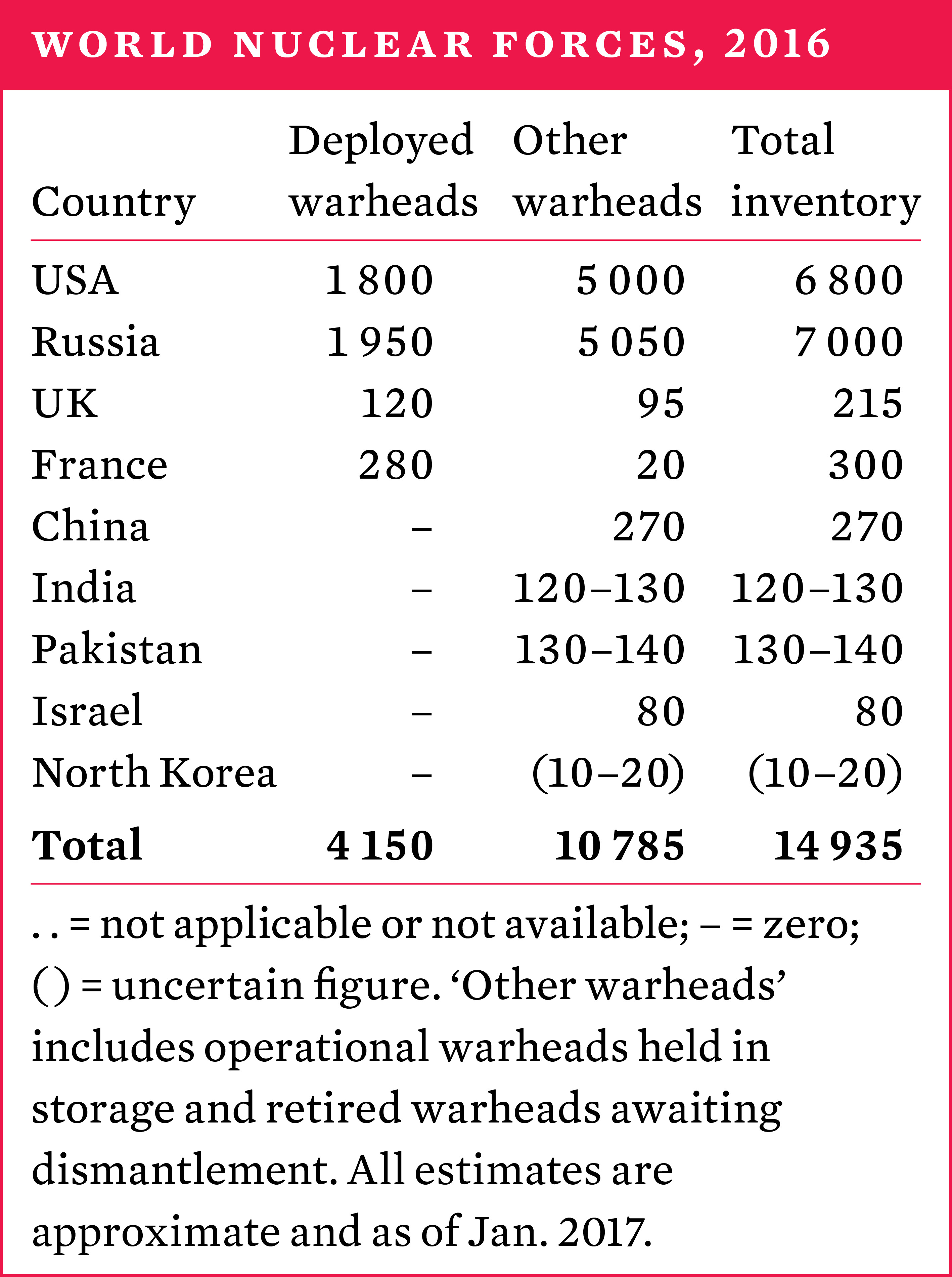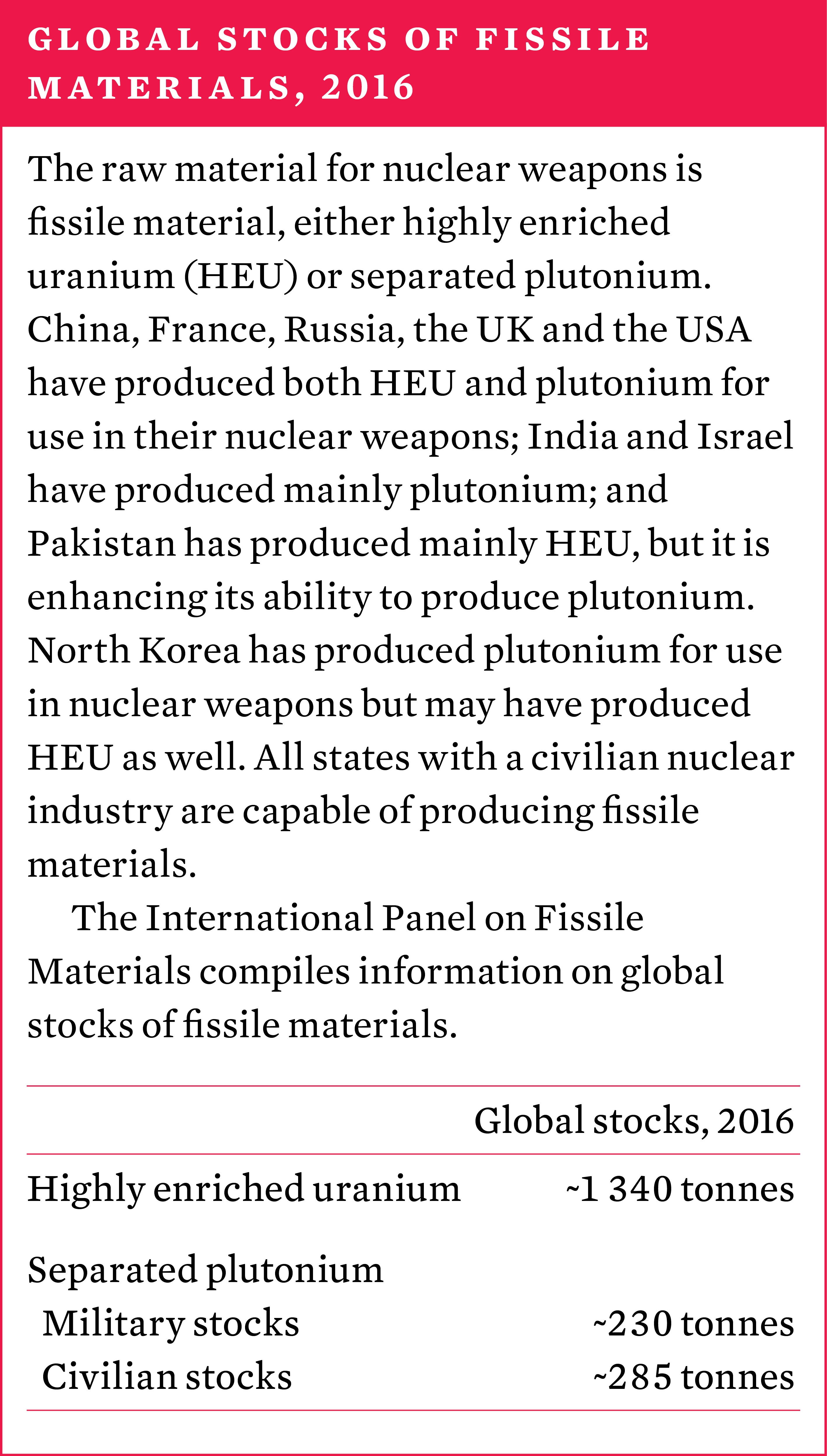11. World nuclear forces
Overview, Shannon N. Kile and Hans M. Kristensen [PDF]
I. US nuclear forces, Hans M. Kristensen [PDF]
II. Russian nuclear forces, Hans M. Kristensen [PDF]
III. British nuclear forces, Shannon N. Kile and Hans M. Kristensen [PDF]
IV. French nuclear forces, Shannon N. Kile and Hans M. Kristensen [PDF]
V. Chinese nuclear forces, Shannon N. Kile and Hans M. Kristensen [PDF]
VI. Indian nuclear forces, Shannon N. Kile and Hans M. Kristensen [PDF]
VII. Pakistani nuclear forces, Shannon N. Kile and Hans M. Kristensen [PDF]
VIII. Israeli nuclear forces, Shannon N. Kile and Hans M. Kristensen [PDF]
IX. North Korea’s military nuclear capabilities, Shannon N. Kile and Hans M. Kristensen [PDF]
X. Global stocks and production of fissile materials, 2016, Alexander Glaser and Zia Mian [PDF]
XI. Nuclear explosions, 1945–2016, Vitaly Fedchenko [PDF]
At the start of 2017 nine states—the United States, Russia, the United Kingdom, France, China, India, Pakistan, Israel and the Democratic People’s Republic of Korea (DPRK, or North Korea)—possessed approximately 14 935 nuclear weapons, of which 4150 were deployed with operational forces. Nearly 1800 of these are kept in a state of high operational alert.

Nuclear arsenals
Overall, inventories of nuclear warheads continue to decline. This is primarily due to reductions made by the USA and Russia, which together account for approximately 92 per cent of nuclear weapons globally. They are reducing their deployed nuclear forces as a result of the 2010 Treaty on Measures for the Further Reduction and Limitation of Strategic Offensive Arms (New START) while also making unilateral cuts in their nuclear warhead stockpiles. At the same time, however, both the USA and Russia have extensive and expensive programmes under way to replace and modernize their nuclear warheads, missile and aircraft delivery systems, and nuclear weapon production facilities.
The nuclear arsenals of the other nuclear-armed states are considerably smaller, but all are either developing or deploying new weapon systems or have announced their intention to do so. China, India, North Korea and Pakistan are thought to be expanding the size of their nuclear arsenals.
North Korea continues to prioritize its military nuclear programme as a central element of its national security strategy, and conducted its fourth and fifth nuclear test explosions in 2016. The tests took the total number of nuclear explosions recorded worldwide since 1945 to 2057.
Inadequate transparency
The availability of reliable information on the status of the nuclear arsenals and capabilities of the nuclear-armed states varies considerably. The USA has disclosed substantial information about its stockpile and forces, and the UK and France have also declared some information. Russia refuses to disclose the detailed breakdown of its forces counted under New START even though it shares this information with the USA, and the US Government has stopped releasing detailed information about Russian and Chinese nuclear forces. The governments of India and Pakistan make statements about some of their missile tests but provide no information about the status or size of their arsenals. Israel has a policy of not commenting on its nuclear arsenal, and North Korea provides no information about its nuclear capabilities.
